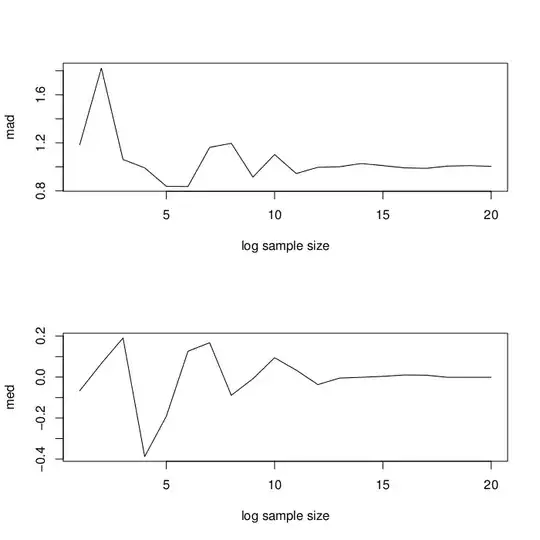Your question assumes that the distribution of the denominator is centered at 0. If this is so, the median and the mad will converge (to 0 and 1, respectively).

nn<-exp(seq(log(10),log(100000),l=20))
aa<-rep(NA,length(nn))
bb<-rep(NA,length(nn))
for(i in 1:length(nn)){
x1<-rt(nn[i],df=1)
aa[i]<-median(x1)
bb[i]<-mad(x1,constant=1)
}
par(mfrow=c(2,1))
plot(bb,type="l",ylab="mad",xlab="log sample size")
plot(aa,type="l",ylab="med",xlab="log sample size")
btw, you have to change the consistency factor in the computation of the mad
from $1.4826=1/\Phi^{-1}(0.75)$ to $1=1/t^{-1}_{0.75}$ (the quantile function of the Cauchy distribution evaluated at $q=0.75$)
